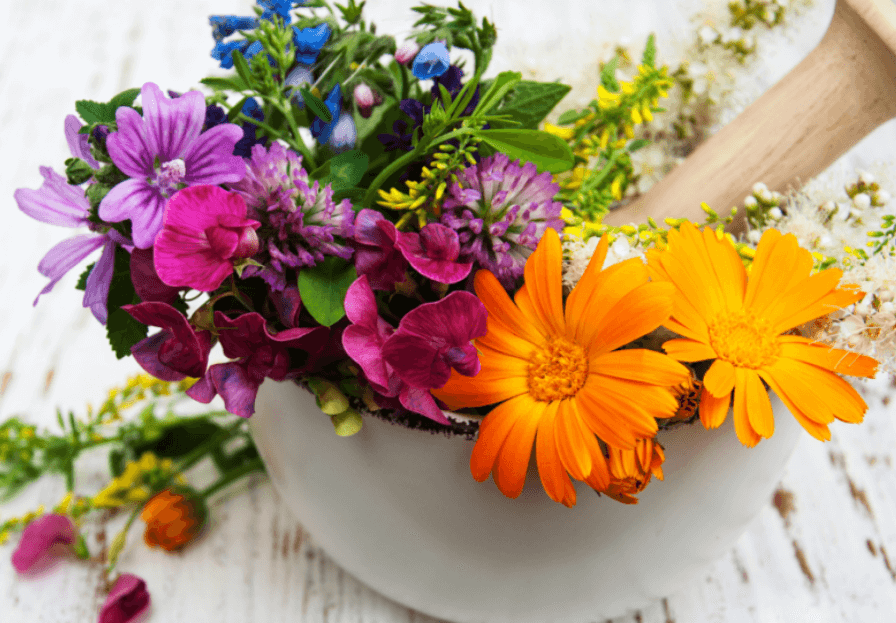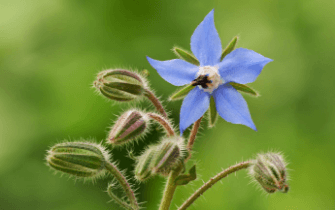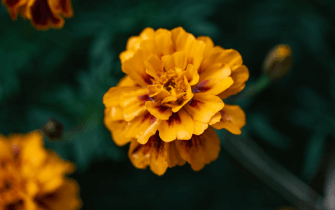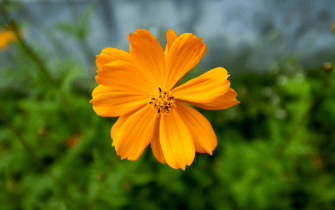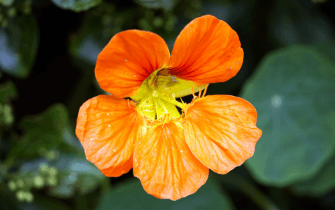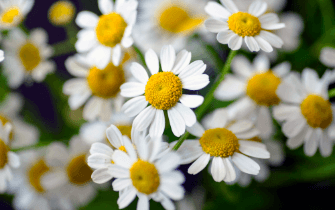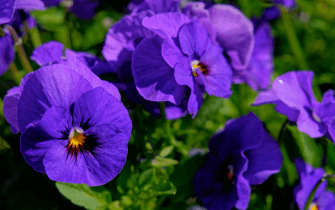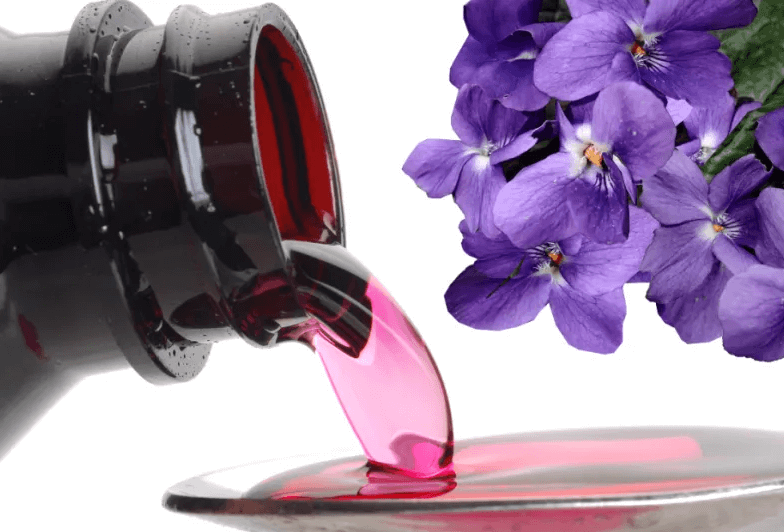Mother Nature’s foods and herbs bloom with the colors of vitality. Her rainbow spectrum of purple, blue, green, yellow, orange and red bears not only the richness of beauty but nutrition and antioxidant power as well. The same colors that reward our senses can give us clues about important phytonutrients (‘phyto’ means ‘plant’) in common foods and healing herbs.
It all begins with the sun. Although sunlight seems to have a golden glow, it’s really made up of all the colors of the rainbow. Plants appear to be green because they reflect the green rays, while absorbing the reds and blues. The color green tells us that chlorophyll (literally, ‘green leaf’) is present, and the darker green a plant looks, the more chlorophyll it has. This is one reason why we’re advised to eat our dark leafy greens: abundant, nourishing chlorophyll. Curiously, an important part of the chlorophyll molecule is almost identical to the part of hemoglobin which carries oxygen in the blood. This is one bit of science supporting the traditional wisdom that dark greens (including wild greens like Dandelion and Nettles) are good for ‘building the blood.’
Dark green also announces the presence of an important companion of chlorophyll, folic acid (folate). The word ‘folic’ comes from the word for leaves, or ‘foliage’. Folic acid is critical for the proper development of the nervous system and all pregnant women are advised to get plenty of this nutrient for their growing baby’s health. Folic acid also ‘builds the blood’ through encouraging the development of oxygen-bearing red blood cells, and so helps prevent anemia and fatigue.
In one of the greatest miracles of Nature, chlorophyll and its companions transform pure solar energy into food and medicine. When sunlight enters chlorophyll, it sparks a series of energetic reactions which ultimately lead to the production of the simple sugar, glucose. This vital molecule, which is the parent off all other phytonutrients, just happens to be the same molecule we call ‘blood sugar.’ Plants and people have a lot more in common than we might have realized! Both plants and people use glucose to build other molecules, as well as for a source of ready energy.
But chlorophyll can’t work alone. It needs protection from the harsh UV rays in the sun’s energetic spectrum. Too much ultraviolet, and photosynthesis begins to release an excess of damaging free radicals. (You may have heard of free radicals in relationship to antioxidant vitamins and supplements. For humans, free radicals contribute to premature aging, the development of degenerative diseases like arthritis and cancer, and cardiovascular problems. Antioxidants in greens, veggies, and colorful fruits help neutralize the free radicals and prevent tissue damage.)
These free radicals generated by over-stimulated chlorophyll could destroy sensitive plant tissue, but they don’t, because the plant has its own built-in antioxidants! Inside a busily sunbathed leaf, hidden by the dark green of the chlorophyll, these yellow and orange antioxidants are at work quenching free radicals and protecting the energy-generating source of life on Earth. Warmly colored antioxidants, they are known as ‘carotenoids,’ named after the familiar orange garden carrot. (When leaves display their brilliant fall colors, we’re seeing carotenoids).
As it just so happens, these same carotenoids protect our cell membranes, keeping the linings of our blood vessels smooth, and making sure our cholesterol and triglycerides aren’t damaged by oxidation. These molecules include the familiar nutrients beta-carotene, lycopene, and lutein. Many naturally yellow, orange, or red vegetables will be rich in antioxidant carotenoids, including sweet potatoes, carrots, squash, pumpkin, citrus fruits, sweet and hot peppers, and tomatoes. Even leafy vegetables have carotenoids, we just can’t see them underneath all that green.
Another nutrient that finds its way into our diets is the molecule that gives curry its bright orange color: the curcumin found in turmeric. This potent phytonutrient is a supreme antioxidant, an effective anti-inflammatory, and a reliable tonic for the liver. Curcumin has been used since ancient days in the practice of Ayurveda, and is one of the most highly regarded remedies in modern phytotherapy. Along with its companion molecules (a phytonutrient never works alone), it’s used in formulas to treat and prevent many inflammatory diseases including allergies, arthritis, and cancer.
In the reddest part of the phytonutrient rainbow, we find two different tribes of molecules: the orangish-red xanthophylls and the purplish-red anthocyanins. ‘Xanthophyll’ means ‘yellow leaf,’ referring to autumn colors, and ‘anthocyanin’ means ‘cyan-colored flower’ which comes from the fact that flower colors are often the work of these molecules.
Two very red xanthophylls are found in sweet red peppers, all kinds of spicy red chile peppers, and paprika. They’re called capsanthin and capsorubin. The ‘caps-’ part comes from the Latin name for the peppers, ‘Capsicum,’ and ‘-rubin’ means ‘red.’ Particularly powerful and long-lasting antioxidants, they are oil-soluble and especially good at protecting the integrity of cell membranes. In fact, all of the carotenoids and xanthophylls are oil-soluble, and studies have shown that ingesting them with adequate dietary fat is necessary for proper absorption.
The other kind of red is at the beginning of a phytonutrient spectrum that moves on through purple and blue. There are many kinds of anthocyanins, and they can change color according to certain characteristics of the plant matrix in which they are found. In this way we find an abundance of anthocyanins in dark, rich blueberries; in the nearly-black elderberries, in the red raspberries and strawberries, and in the purple eggplant and cabbage. Anthocyanins are generally antioxidants, anti-inflammatories, tonics for the cardiovascular system, and cancer-preventative molecules.
But what about black and white? In plants (such as Chinese eggplant or black turtle beans) black is really a very dark purple color, so it indicates a richness of anthocyanins. White generally means two things: either an abundance of saturated fats (think coconut) or the absence of many colorful nutrients (as in the inside of an apple or cucumber – most of their nutrients are in the skins). Only refined sugar and salt are nearly pure white. White is also the color of many pharmaceuticals, including the familiar aspirin. So while white things are not always bad for us, the color can sometimes be a flag of caution – like the white tail of a deer!
Finally, some phytonutrients are colorless, but still very active. One special group of molecules with potent antioxidant properties are the OPCs found in grape seed extracts, grape skins, and hawthorn berries. Numerous studies have demonstrated that OPCs help to protect the heart and blood vessels, prevent inflammation in muscles and joints, and discourage the growth of abnormal cells. They also have astringent healing properties to protect the skin and mucous membranes of the respiratory and digestive systems.
The colors of vitality are Nature’s gifts and clues to the inner mysteries of herbal medicines and healing foods. As we bring these phytonutrients into our daily diets, let’s remember the wisdom behind Grandmother’s old saying: The more pretty colors you eat, the lovelier you will be. Healthy is as healthy eats, so here’s the rainbow for thee!
*****************************************************************
Lisa Ganora, a scientifically trained traditional herbalist, is the Director of the Colorado School of Clinical Herbalism in Boulder, CO. Her book, Herbal Constituents, is used in Herbal Programs, Naturopathic Schools, and Universities around the world. ClinicalHerbalism.com HerbalConstituents.com
*****************************************************************











